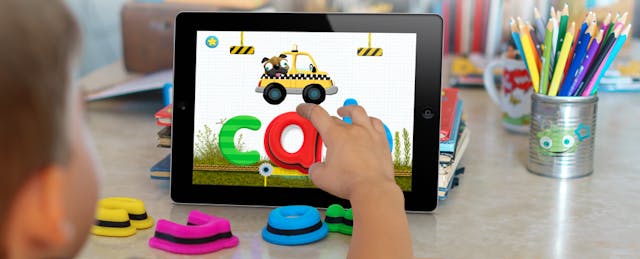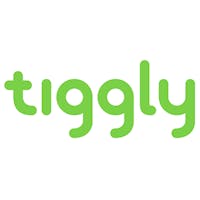The non-touch model of edtech is changing, thanks in part to the century-old theories of early education pioneer Maria Montessori.
Ask a child to sit on her hands while she solves a problem, and it will feel like an insurmountable task--for both the educator and the child. But let her pick up an object, hold it, inspect it, experiment with it--and it becomes clear that a child’s thinking is grounded in touch and movement.
This is the essence of traditional Montessori education, which emphasizes children’s need to move, explore and manipulate the world around them in order to understand it. Montessori believed that “a child’s hands and developing brain are intimately connected.” Her belief can be easily observed in practice by watching any kindergartener try to solve a math equation by counting on his fingers or building a block tower.
But what happens when technology becomes a central point of instruction? How do the youngest students engage with the educational content found in apps and games while still feeling and touching the world around them? Traditional Montessorians, for example, have warned that the current influx of technology is developmentally inappropriate for young learners.
Today's classroom technology falls short of embracing a young child’s senses and skill set. That's because the types of technology early learning classrooms offer their students lack the opportunity for tactile interactivity. Most common are tablets, computers, projectors, or digital cameras, all of which place a high value on output. Few of these technologies require physical manipulatives--things kids can touch and play with--that also connect to the digital realm.
But this is changing. Companies are re-imagining and redefining “education technology” so that classroom computing becomes a more tactile experience for hands-on activities and learning. This approach, called connected technology, involves pairing a physical object the child can hold, such as blocks, with a digital interface, such as a tablet or robot. Sometimes, those objects are used to gather information, as is the case with Tiggly’s tablet-compatible physical manipulatives, or MaKey MaKey’s invention kits. With products like Sphero’s app-enabled robots, the the physical object is on the receiving end of the data.
Why is connected technology so important for a young learner? The simple answer is that it takes the essential aspects of tactile play and builds a bridge to the digital world. While enhancing cognitive learning in young students, connected technology also puts control back into the child’s hands--quite literally. Finding a balance between the technology and the tactile is important especially for classrooms that use tablets. Connected technology also offers the immediate and personalized feedback that is unique to a digital learning environment.
Multiple studies have shown that integrating connected technology into curriculum leads to higher engagement, greater enjoyment and better collaboration while learning. Going forward, edtech developers need to consider the role of touch when creating technology for early elementary children. And early childhood educators must carefully weigh the pros and cons of each type of technology they add to their classrooms.
When teachers first see connected technology being used in the classroom, they usually don’t need to hear the “why”. The potential impact on students’ learning is obvious. Maria Montessori would be pleased to know her learning theories have not only withstood the test of time, but are being applied in the new wave of connected technology.



